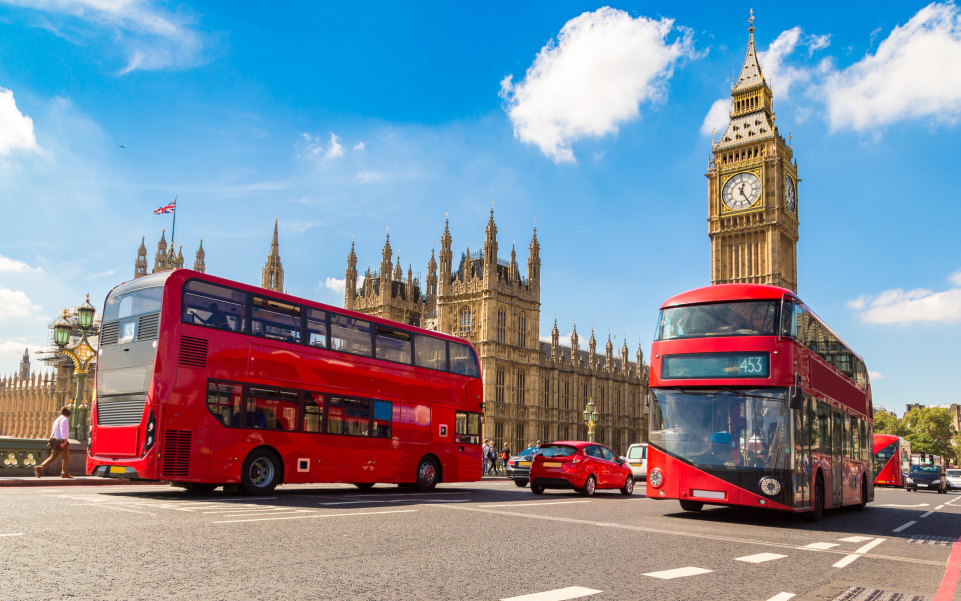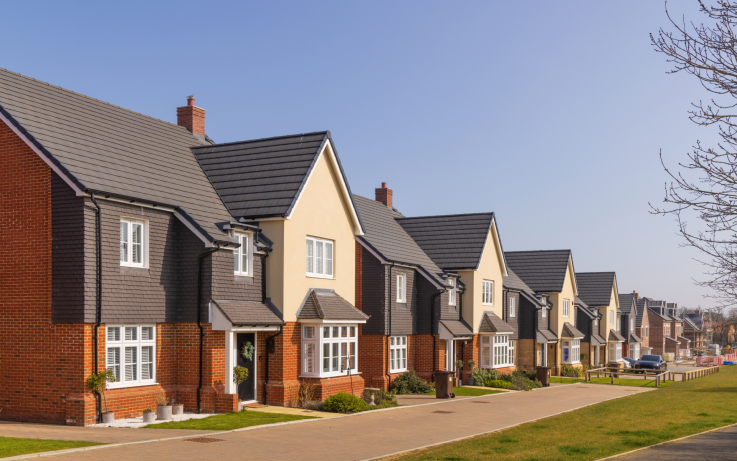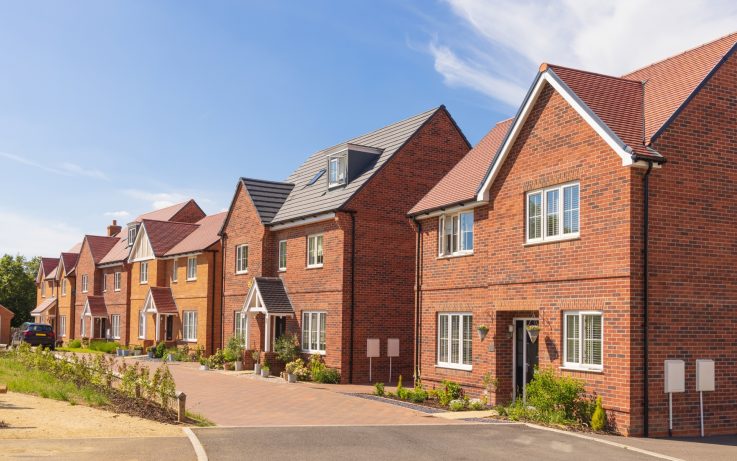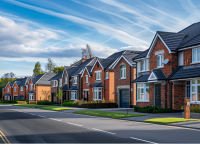Overview of London boroughs: infrastructure features and property prices

With picturesque streets, history, a rich cultural scene and a variety of architectural styles, London offers many neighbourhoods to live in, each with its own unique character. We take a look at the most attractive areas in London to live in, where you can enjoy the cosiness of the suburbs, the accessibility of the city centre and an abundance of green spaces.
Top West End neighbourhoods: Soho, Kensington and Chelsea
West London is a diverse region with many sought-after residential areas. Those closest to the city centre are the most expensive, but if you move a little further afield you can find more affordable accommodation. Let’s take a look at the best neighbourhoods to live in West London.
Kensington and Chelsea
Housing prices peak in these areas. Closer to the north there are more economical housing options. To the south are more refined homes, including elegant Victorian townhouses with elaborate gates and luxury mansions. It is a compact and densely populated neighbourhood, home to affluent Londoners.
Notting Hill
This is a thriving and trendy part of the city, attracting a bohemian style and lively atmosphere. It is home to Portobello Market, one of the most famous markets in the UK, which attracts thousands of tourists every week. It also hosts the annual carnival, which is one of the biggest street festivals in the country. The accommodation is characterised by high prices.
Hammersmith
A good neighbourhood to buy property and live in. Hammersmith’s population is diverse, with young families and businesspeople alike living here. The variety of housing is also impressive, including townhouses and modern apartments. Hammersmith is a commercial centre and home to the head offices of international companies such as Disney, Coca-Cola and L’Oreal, making it a busy weekday area. The transport system here is well developed, with several underground lines, many bus services and more.
Fulham
Fulham is located between Chelsea and Putney, just four miles from Charing Cross. Once an industrial area, it is now one of the most sought-after neighbourhoods in London. The area is full of streets with cosy green trees and parklands, making living in Fulham a dream for many Brits and foreigners. Most of the buildings here are Victorian townhouses, although there are some Georgian buildings as well. Fulham is well connected to the city centre thanks to the underground. There is also a well-developed bus network, with four bus routes running through the area.
Soho
The Soho area of London is always full of entertainment and events. There are many stylish bars, cafes and restaurants, as well as Chinese shops in Chinatown.
This is the place where the coolest parties take place and where there is always something going on. Although there are not many residential buildings here, there are still flats and lofts that will suit people who love nightlife and are willing to pay a high price for a place to live.
St John’s Wood
This neighbourhood is regularly ranked as one of the most expensive places to live in London. It is a beautiful place with a rich history, just 2 miles from Oxford Street. The green streets are a short walk to the city centre, although you can also get there quickly by public transport. The area is popular with families due to its large detached houses, schools with a brilliant reputation and proximity to Regent’s Park. There is virtually no nightlife here and most homes are gated.
Central areas: Mayfair, Westminster and Belgravia
If you want to be in the thick of things, there are both sophisticated and more budget-friendly options in the heart of the capital. We have highlighted the best places to consider.

Finsbury Park
Finsbury Park is a neighbourhood that continues to grow. Previously its reputation did not attract residents, but as young professionals and families began to move here, new coffee shops, restaurants and apartment complexes began to appear. It is a residential neighbourhood where new flats sit alongside Victorian townhouses. The development of City North has seen the creation of 355 new homes, including one, two, three and four bedroom flats. Today, Finsbury Park is characterised by green spaces that attract young families. The tube station here is one of the busiest in London. Piccadilly station is a quick tube journey from here, and national rail services are available to King’s Cross, Welwyn Garden City and beyond.
Mayfair
This is one of the most expensive areas to buy a home, with prices starting from £1000000 for a one-bedroom flat. Being right on the main streets of the capital, there’s no better place to live if you want to live right in the centre of the largest city in the UK.
Transport links here are well developed and include two underground stations, Bond Street and Green Park.
Farrington
Farringdon is located in the centre of London, between Holborn, Clerkenwell and the City, and is technically divided into two boroughs. The principle of the division dates back to 1394 – at that time part of the borough was within the boundaries of the London Wall and the other part was not.
These days, Farringdon is a thriving neighbourhood and an ideal place for foodies, with plenty of dining options. If you live in Farringdon, getting around London is easy, with the tube station serving the Circle, Hammersmith and City lines, as well as national destinations.
Westminster
Stretching from the banks of the Thames to Paddington, this neighbourhood epitomises luxury and prestige. Living here means immersing yourself in high society, an atmosphere of wealth and ambition. The smell of prestige and high status is everywhere, from the buildings with unique architecture to the tourist influx.
The main highlight of the neighbourhood is the opportunity to live next to the royal family, which gives the place a special charm and appeal.
Belgravia
One of the most expensive neighbourhoods. Known for exquisite residences and their residents. Property here has always been in demand and expensive. Buying a house for £10000000 is a common thing here. However, property deals are rare here due to limited supply and high prices.
City of London
This unique neighbourhood, which is not formally a borough but has its own unique atmosphere. It is famous for its financial sector and business atmosphere. A local saying goes that business deals are done here faster than residents can walk their pets.
The City is a true centre of financial transactions, with many business organisations outnumbering even the number of residents. This neighbourhood attracts people looking to expand their financial opportunities. However, apart from the business atmosphere, the City is also known for its central location and the presence of historical landmarks such as St Paul’s Cathedral. This place is also popular with tourists.
Life here may seem too busy due to the large number of people and businesses, but for those who are used to a dynamic urban environment, the City can be a true home.
The best neighbourhoods to live in the East End are Shoreditch and Greenwich
East London is a great option for work and leisure. From leafy Plumstead to bustling Shoreditch, there’s an option for everyone looking for the perfect accommodation in London.
North Greenwich
This area, located on the Greenwich Peninsula, is characterised by modern development. It is largely dominated by modern residential high-rises with views of the Thames. It attracts connoisseurs of convenience and picturesque scenery. Architectural features of the neighbourhood include glass facades, modern designs and spacious flats with large windows.
North Greenwich is also known for its entertainment and cultural opportunities including restaurants, cafes and shops, as well as popular coastal routes for walking and relaxation.
Shoreditch and Hoxton
These areas used to be industrial zones, but nowadays they are undergoing significant changes and turning into centres of urban life with a unique character. There are old factory buildings converted into stylish lofts and apartments as well as modern high-rise complexes. These neighbourhoods offer a variety of housing options for different budgets and preferences.
Shoreditch and Hoxton are also known for their entertainment and cultural options such as nightclubs, bars, galleries and restaurants, making them attractive to young people and those who appreciate an urban atmosphere and creative spirit.
Putney
Putney is a quiet neighbourhood with a distinctive atmosphere. The housing stock offers a variety of housing options, including new apartments as well as old mansions and townhouses. The area is known for its cosy streets and parks. Walking and jogging trails along the river add to the appeal for outdoor enthusiasts.
Hackney
Located 4 miles from Charing Cross and literally round the corner from Shoreditch and Hoxton. A variety of residential styles are represented here: you can find historic houses next to new housing estates. There’s Hackney Empire and Broadway Market for culture lovers.
Although the area does not have a tube station, it is part of the Overground network, allowing for quick access to Liverpool Street.
As Hackney becomes more popular, house prices are rising, but there are always bargains to be found here.
Forestgate
Close to Charing Cross is a quiet residential neighbourhood that falls within the Woodgrange Conservation Area. It is a popular neighbourhood for young families thanks to West Ham Park, which is full of green playgrounds. There are also several good primary and secondary schools here.
Forestgate mainly features period houses. This location is suitable for those who need to get to the city centre on a daily basis, as Canary Wharf is 15 minutes away and the West End is 20 minutes away.
Dalston
This picturesque neighbourhood is growing as fast as its house prices. Dalston is only 4 miles from the centre of the capital and although there is no underground station, there are several Overground stations, so Liverpool Street can be reached in around 10 minutes. There is also an extensive bus network operating here.
Although Dalston is favoured by young people, it is also a great choice for families. There are good primary and secondary schools here.
Plumstead
Plumstead is located in the Royal Borough of Greenwich, and although there has been rapid development growth, there are large areas of green space remaining, making it a family friendly space. The local public park is a large green space that is part of the South East Greenwich Green Chain.
Just 8 minutes to London Bridge and 30 minutes to Charing Cross on Overground, Plumstead is ideally located for those looking for a quick commute into the centre of the capital while enjoying all the benefits of living away from the hustle and bustle of the city.
Canary Wharf
Canary Wharf is a business district with many offices. Among the important pluses, there is a metro.
There are a lot of good new buildings here and prices are more affordable than in the central areas, both for renting and buying a home. You can buy a studio flat in a modern building with a concierge, swimming pool and private cinema for up to £1000000.
North London: Camden, Islington and Highbury
North London offers places to live to suit all tastes. From royal-style estates in Islington to more budget-friendly apartments in Camden, there’s a neighbourhood to suit every budget.
Camden
Camden is a great place to live. At its heart is Camden Lock, a series of canalside bars, cafes, market stalls and art spaces. The area also boasts one of London’s best live music venues. There are plenty of parks nearby. Locals are most fond of Primrose Hill, which overlooks the city.
Islington and Highbury
Islington is known for its variety of entertainment, with residents enjoying going to bars, cinemas and shops, as well as the atmosphere of Upper Street. Neighbouring Islington, Highbury offers a more tranquil environment and attractive natural surroundings.
Islington’s residential area, which stretches north of the Regent’s Canal, is impressive for its architecture and period terraced houses that create a cosy feel. Highbury is characterised by its natural views, which is particularly appreciated by families with children. Both neighbourhoods are well located in terms of accessibility to major attractions in London, making them attractive to a wide range of residents.
Highgate
Highgate is a world apart from the hustle and bustle. The name speaks for itself: it is situated on a hill (North Hill) high above the town, on the north-east side of Hampstead Heath. There’s plenty of greenery and old pubs, some of them hundreds of years old. Highgate has a real village feel and a friendly community. Travelling to Liverpool Street, Leicester Square and the Bank takes just over 30 minutes. This is a great place for those who appreciate quietness.
Most of the buildings are old and Victorian, although there are some new builds. The average house price here reaches almost £1300000.
South: Brixton, Richmond and Tooting
South London combines all the benefits of city life with the peace and comfort available outside the centre.
Brixton
This eclectic corner of south London is full of places to eat, drink and socialise. Brixton’s lively character makes it popular with young people. This has led to an increase in rent and house prices. But they still remain lower than many other popular neighbourhoods. The housing stock consists of townhouses, older council estates and new builds.
Brixton has a tube, providing quick access to Soho and the King’s Cross area.
Peckham
Investment and redevelopment has transformed Peckham from an ordinary, deprived area of south-east London into one of the capital’s most happening places. The area is popular with young professionals who move here for the nightlife and thriving creative scene.
Peckham is in the borough of Southwark just 3.5 miles from central London. There are no tube stations here, but there are plenty of bus routes that will take you into central London and beyond. There are also overground railway stations running through Peckham from where you can travel to other cities.
Tooting
Lonely Planet magazine ranked Tooting as one of the most popular places to live in 2017, thanks to its cuisine, colourful local market and the vast green spaces of Tooting Commons, including Tooting Bec Lido, the largest freshwater pool in the country.
Tooting is increasingly popular with young professionals attracted by the growth of the area, as well as families who are finding the property market offers attractive, allowing them to purchase spacious accommodation at lower prices than in the city centre.
Wimbledon
Wimbledon is known around the world for its annual tennis tournament. However, tennis is not the only thing this beautiful area has to offer. Two areas can be highlighted here:
- Affluent Wimbledon Village, centred around the high street and evolved from the original medieval village;
- An urban area that was formed during the industrialisation of the area in the nineteenth century.
Battersea
Formerly a picturesque village in Surrey, Battersea has grown into a large development, attracting foreigners and Brits. The main property type in the area is Victorian row houses, but there are also modern housing estates, most notably the Art Deco Battersea Power Station.
Richmond
This borough attracts with its prosperity and tranquillity, remaining one of the most desirable places to live in London. Gorgeous green streets, rich architecture and beautiful coastal areas all create a special atmosphere that draws people in. There are numerous public areas, theatres, shops and restaurants. Excellent schools, developed infrastructure and accessibility to transport make Richmond attractive to all categories of people.
Special mention should be made of the Royal Kew Gardens, which give this borough a special charm and uniqueness.
Dulwich
Located in south London, Dulwich is a green and cosy area with a unique charm. It is dominated by picturesque streets.
Dulwich attracts families and young people who want to enjoy country living. With direct trains to London Bridge, residents can reach the city centre in just 15 minutes and cycle routes provide additional options for an active lifestyle.
Dulwich’s housing stock is dominated by Edwardian and Victorian buildings, many of which have been adapted into modern apartments. Housing costs may depend on parkland views or proximity to an underground station providing easy access to central London.

The 5 best neighbourhoods to live in London
In 2023, HomeViews surveyed 17,000 respondents and ranked the best neighbourhoods to live in the UK capital. Londoners had to answer several questions and rate the convenience of location, the level of transport links, the quality of education in local schools and more. Here are the five neighbourhoods that received the highest scores.
|
Position |
Neighbourhood |
Average score (out of 5 possible) |
|
1 |
Islington |
4,55 |
|
2 |
Hollington |
4,53 |
|
3 |
Waltham Forest |
4,51 |
|
4 |
Newham |
4,51 |
|
5 |
Barnet |
4,48 |
Continuing to grow in recent years, Islington has become the most popular neighbourhood in London for indicators, scoring 4.55 out of a possible 5. It’s a diverse borough with many neighbourhoods, each with its own personality, from the city’s Angel bars and pubs to the chic antique shops of Camden Passage. Property here has many guises too – there are luxury apartments and quaint townhouses standing shoulder to shoulder on quiet backstreets.
Next is Hillington, following on the heels of Islington. Unsurprisingly, the largest and most westerly borough maintains consistently high scores, as it offers quick access to green areas. The towns of Hayes, Uxbridge and Ruislip perform well and the presence of Heathrow Airport only strengthens the position.
Waltham Forest ranks third in neighbourhoods with an average rating of 4.51 out of 5. Waltham Forest is one of the largest neighbourhoods. It is made up of several distinct neighbourhoods, each with its own unique charm. The population of the neighbourhood is diverse and dynamic, making it a great place to live.
Newham, a small east London borough ranked 4th, continues to attract new residents due to its fast pace of life, high level of culture and dynamic plans to build an even better future. With a host of urban regeneration projects such as Stratford and Canning Town, Newham has something to offer every visitor.
In 5th place (with a score of 4.48) is the borough of Barnet, on the northern outskirts of London. The borough is well developed transport: it is conveniently accessible by bus, rail and underground.
Other benefits include a high level of education in primary and secondary schools, excellent shopping and nightlife, and a gastronomic variety that everyone should try.
Questions and answers on the best neighbourhoods to live in London
Which London neighbourhoods are the most popular to live in?
London has several popular neighbourhoods to live in:
- Camden. Attracts attention for its rich cultural scene, array of entertainment and convenient location. The area is particularly popular with young people and creatives as it offers a wide range of independent shops, art galleries, clubs and cafes. Camden Market is particularly well known for its variety of cultures and flavours.
In addition, due to its proximity to the city centre, Camden residents have easy access to a host of entertainment and facilities; - Islington. One of the most picturesque and attractive areas to live in North London. Known for its beautiful boutiques, restaurants and cafes that create a cosy atmosphere. The area also offers great opportunities for a cultural and active lifestyle, with numerous theatres, concert halls and parks.
With its variety of housing, from luxury flats to traditional townhouses, Islington attracts young professionals and families alike; - Richmond. A suburban neighbourhood in west London that combines a sophisticated atmosphere with beautiful natural spaces. With its cosy streets, beautiful parks and riversides, Richmond creates a sense of tranquillity and comfort. Residents of the neighbourhood can enjoy strolls in Richmond Park, picnics on the banks of the River Thames and fine dining in restaurants overlooking the water.
In addition, Richmond offers excellent educational facilities and access to an extensive public transport network, making it an attractive choice for families with children and those looking for a cosy countryside atmosphere.
Which areas of London are the most promising for property investment?
East London is attracting the attention of investors due to its rapid development, young audience and new residential developments. Particularly popular neighbourhoods include:
- Shoreditch attracts a rich cultural scene, trendy bars and restaurants. The neighbourhood is famous for its art galleries, street exhibitions and independent shops.
Investing in apartments in new residential developments or commercial property in Shoreditch can be a promising investment due to the stable demand and high rental rates; - Dalston is also a popular area for property investment. The area attracts young and creative people due to its alternative clubs, cafes and cultural activities. Developing residential and commercial projects in Dalston provide property opportunities with high potential for value growth;
- Stratford became famous after the 2012 Olympics when the area was revitalised and received significant investment in infrastructure. Since then, Stratford has continued to grow, attracting new residents and businesses. Various residential developments and commercial properties provide a wide range of opportunities for investors, and the growth in property values in the area remains promising.
Which neighbourhoods offer the best combination of accessibility to services and a peaceful atmosphere?
The most accessible and quiet neighbourhoods in the UK capital:
- Fulham. Located in West London and offers a great mix of convenience and green spaces. The area is known for its beautiful parks (such as Bishops Park) and the River Thames, which provides a pleasant atmosphere for walking and relaxing. Fulham also offers a variety of shops, restaurants and cafes, providing residents with access to a variety of services.
With good transport links, including several tube stations and bus routes, Fulham residents have easy access to other areas; - Although Richmond is located in the suburbs of London, it is a great place to live. The area is surrounded by beautiful parks including Richmond Park with its famous deer and Kew Gardens with its rich plant life. Richmond offers an extensive network of shops, restaurants and cafes as well as cultural attractions such as the Richmond Theatre and the Royal Botanic Gardens.Despite its suburban location, Richmond has excellent transport links to central London thanks to the rail network, making it an ideal place to live for families and those who appreciate tranquillity and nature.







